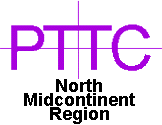
Second Quarter 2000 |
Coiled Tubing Applications Have Appeal To Kansas
Operations
Among the new technologies revolutionizing the petroleum industry
during the 1990s was the dramatically increased usage of coiled
tubing. Actually, coiled tubing has been around since the mid
1960s but didn't receive much recognition until its cousin, horizontal
drilling, took off. Although a common sight in areas such as
the Rockies, Oklahoma, the Gulf Coast, and even parts of Appalachia,
a coiled tubing rig is a rare sight in Kansas. About the only
application thus far in the state has been post-frac wellbore
cleanout jobs in the Hugoton and Panoma fields in southwest Kansas.
But is there more opportunity for coiled tubing applications
in Kansas? Why hasn't this state's industry utilized this technology
which is so readily accepted in other regions? There are several
reasons why the industry has been so hesitant to respond and
yet many reasons why it should consider coiled tubing applications.
Perhaps the most sound reason CT has not made inroads in Kansas
(and perhaps the only reason, realistically) - is money. A coiled
tubing unit has a relatively high front end cost and an operator
or service company must weigh the investment in the balance against
its profit potential. In recent years, it has been very difficult,
if not impossible, to justify the capital outlay required to
purchase the equipment. Now, with the future of gas prices looking
rosy and oil prices remaining somewhat stable (hopefully), perhaps
the time to invest in this equipment will never be better. Another
reason, probably less significant, is the nature of the many
independent operators to be resistant to any new technology which
is substantially different than methods used in the past. However,
lets look at the applications that can be provided to the Kansas
operator by CT operations.
Drilling, whether reentry or new drilling, is one of the primary
functions of CT. Since the tubing is spooled through a blow-out
preventer and injector, the drilling (or any application) may
be performed with overbalanced or underbalanced pressures. Logging
and testing of horizontal laterals may also be performed utilizing
CT. If it is necessary to trip-out of the hole, it can be accomplished
in a matter of minutes.
Cleanouts and well treatments can be performed without killing
the well. Treatments can be placed exactly where desired and
perforations can be jetted or cleaned using coiled tubing. Squeeze
cementing jobs are performed faster due to the ability to place
the cement at the exact spot and the more rapid time to cleanout
the cement and round-trip the tubing. Equipment, such as packers,
can be run with CT. Wellhead equipment can be replaced without
killing the well by setting a shallow plug with CT, replacing
the wellhead, and retrieving the plug.
Wellbore extensions can be performed by drilling deeper, underreaming,
or drilling horizontal laterals with CT, using any type of drilling
fluid.
Other applications include; running mechanical integrity tests,
releasing stuck drill-pipe, clearing bridges in casing, setting
cement or sand plugs, jetting wellbore for removal of scale,
paraffin and salt deposits, and plugging wells.
In the near future, the North Midcontinent Resource Center
will be offering a workshop on "Coiled Tubing Applications
in Kansas". We invite you to mail, phone or email your comments
and questions concerning this technology. The future is ours,
only if we reach for it. |